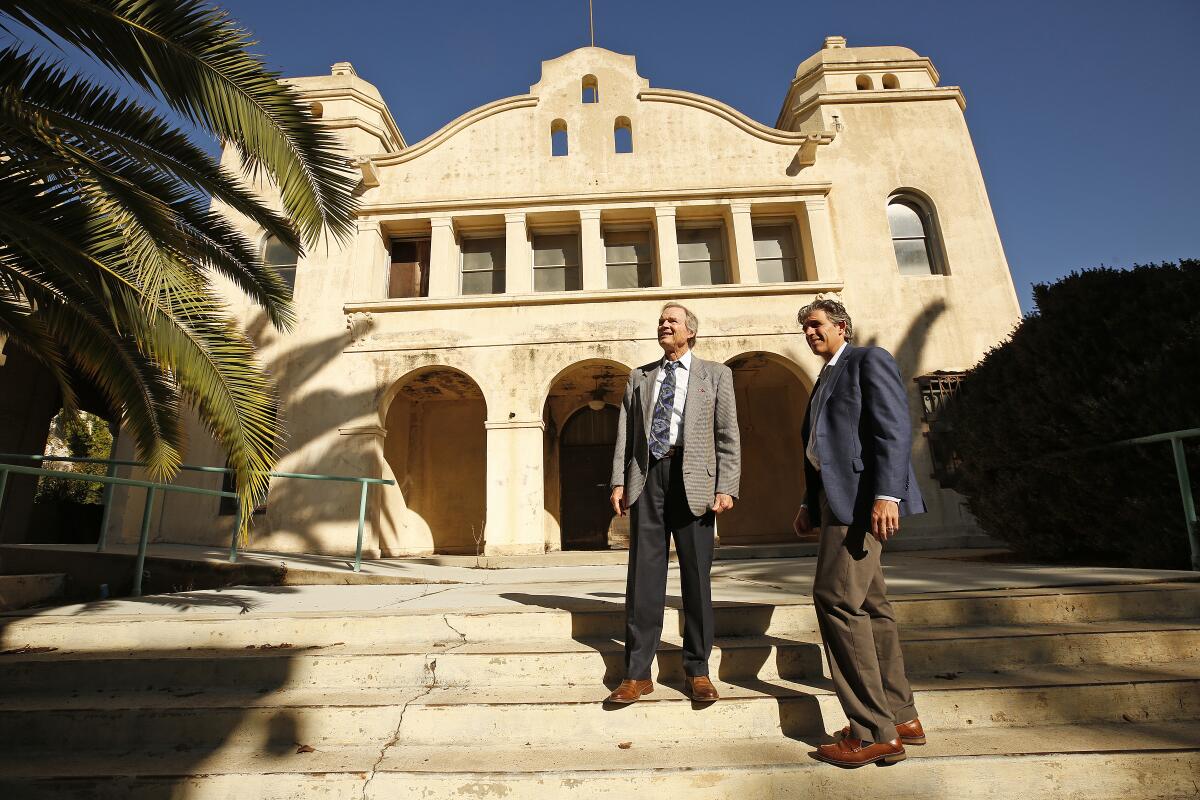Editorial: Will homeless veterans ever get housing on land set aside for them?

- Share via
Homeless veterans, mentally disabled or traumatized as a result of their service, and their advocates waged a long legal battle to force the Department of Veterans Affairs to stop using parts of the sprawling VA campus in West L.A. for non-veteran enterprises and return the campus to the use for which it was originally intended: housing veterans.
In 2015, former VA Secretary Robert McDonald halted his department’s legal bickering and entered into a settlement with the veterans. That led to an ambitious master plan to transform much of the 387-acre campus from a clinical setting, dominated by a hospital on the south end and decrepit unused buildings on the north end, into a vibrant community of at least 1,200 units of permanent supportive housing for homeless and at-risk veterans along with gathering spots. The health centers would still be there but the campus would get a warm infusion of cafes, stores, barbershops and hair salons to attract all veterans.
That was 2016.
Five years later, a grand total of 54 units of permanent supportive housing for homeless veterans are open. (There is also temporary homeless housing on the campus.) The master plan timeline called for about 480 units to be constructed by September 2020. As the inspector general pointed out, the 54 units now open constitute 11% of what was expected to be open in 2020.
So what happened? A lot of things.
The VA had to conduct an environmental impact study of the entire campus. That took two years and wasn’t finalized until September 2019. A year before that — in November 2018 — the VA hired a consortium of three developers to function together as a principal developer to oversee the implementation of the master plan.
The principal developer group was partially hamstrung by the discovery that utilities under the VA grounds — water, sewer, and stormwater systems — needed to be fixed to create 1,200 units of housing, and the repairs would cost between $10 million and $14 million. The VA would have to pay for it. But the VA had to apply for the funds within its own system. Repairs are now underway.
But the most difficult part has been raising the money to build the housing. According to the inspector general’s report, as of July 2021, the principal developer had secured just over a quarter of the funds necessary to build its initial phase of housing. One official of the principal developer group says it has since raised millions more in state and philanthropic funds, and it is waiting on an additional $50 million in applications to various financial programs.
And that is the larger problem — waiting on money. Financing permanent supportive housing relies on a multitude of sources, from local, county and state governments, along with extremely competitive tax credits or tax-exempt bonds. The availability comes around only a few times a year. Get rejected in one round and sometimes a developer has to wait another year to apply. The current systems for doling out public dollars are bound up in bureaucracy and cumbersome rules that slow projects and make them more expensive to build. If we want to have affordable housing everywhere, we need to make it easier for qualified developers to get financing.
Meanwhile, the principal developer has now advanced its community plan, which is supposed to be a more realistic take on the master plan. Now the developer is saying that 237 units of housing will be completed in 2022 and 682 units will be completed in 2027. Veterans will have to wait until 2031 for all 1,200 units to be done.
And what about the town center with its cafes and stores? The principal developer says those elements remain in the new community plan. Some veteran activists are skeptical of that. Veterans have repeatedly said they want shops, amenities and a sense of community on the VA campus. The principal developer must ensure the town center remains in the plan.
It’s unacceptable that Southern California will have to wait another decade for the promised 1,200 units of housing on the VA campus, while about 3,900 veterans sleep on the street or in shelters. Veteran homelessness is a national disgrace, and it’s all the more galling when there are hundreds of acres of prime real estate in Los Angeles that could be turned into housing if only there were more urgency at all levels.
More to Read
A cure for the common opinion
Get thought-provoking perspectives with our weekly newsletter.
You may occasionally receive promotional content from the Los Angeles Times.










